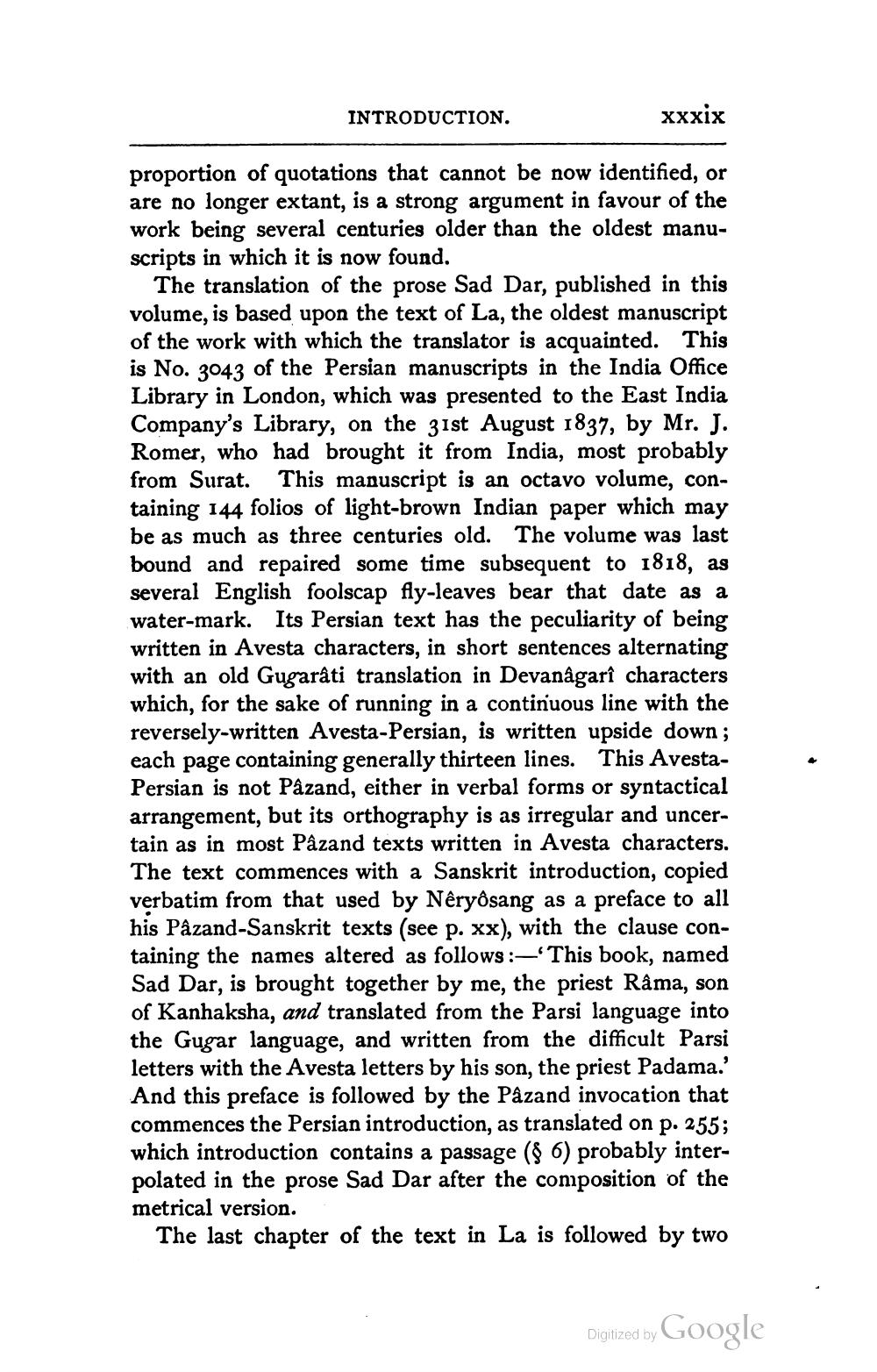________________
INTRODUCTION.
xxxix
proportion of quotations that cannot be now identified, or are no longer extant, is a strong argument in favour of the work being several centuries older than the oldest manuscripts in which it is now found.
The translation of the prose Sad Dar, published in this volume, is based upon the text of La, the oldest manuscript of the work with which the translator is acquainted. This is No. 3043 of the Persian manuscripts in the India Office Library in London, which was presented to the East India Company's Library, on the 31st August 1837, by Mr. J. Romer, who had brought it from India, most probably from Surat. This manuscript is an octavo volume, containing 144 folios of light-brown Indian paper which may be as much as three centuries old. The volume was last bound and repaired some time subsequent to 1818, as several English foolscap fly-leaves bear that date as a water-mark. Its Persian text has the peculiarity of being written in Avesta characters, in short sentences alternating with an old Gugarâti translation in Devanagari characters which, for the sake of running in a continuous line with the reversely-written Avesta-Persian, is written upside down ; each page containing generally thirteen lines. This AvestaPersian is not Pazand, either in verbal forms or syntactical arrangement, but its orthography is as irregular and uncertain as in most Pâzand texts written in Avesta characters. The text commences with a Sanskrit introduction, copied verbatim from that used by Nêryosang as a preface to all his Pâzand-Sanskrit texts (see p. xx), with the clause containing the names altered as follows :—'This book, named Sad Dar, is brought together by me, the priest Râma, son of Kanhaksha, and translated from the Parsi language into the Gugar language, and written from the difficult Parsi letters with the Avesta letters by his son, the priest Padama.' And this preface is followed by the Pâzand invocation that commences the Persian introduction, as translated on p. 255; which introduction contains a passage (§ 6) probably interpolated in the prose Sad Dar after the composition of the metrical version.
The last chapter of the text in La is followed by two
Digized by Google




